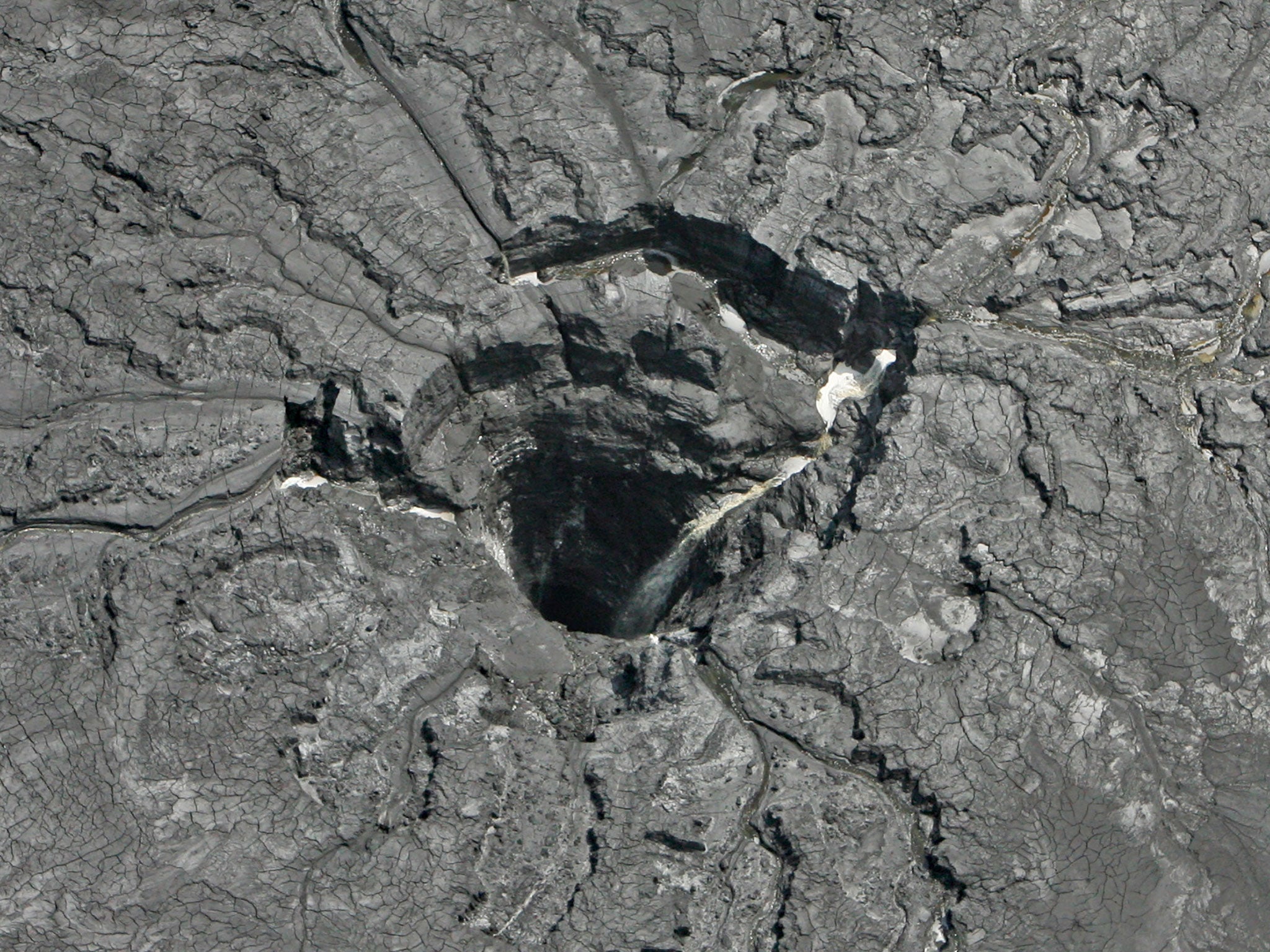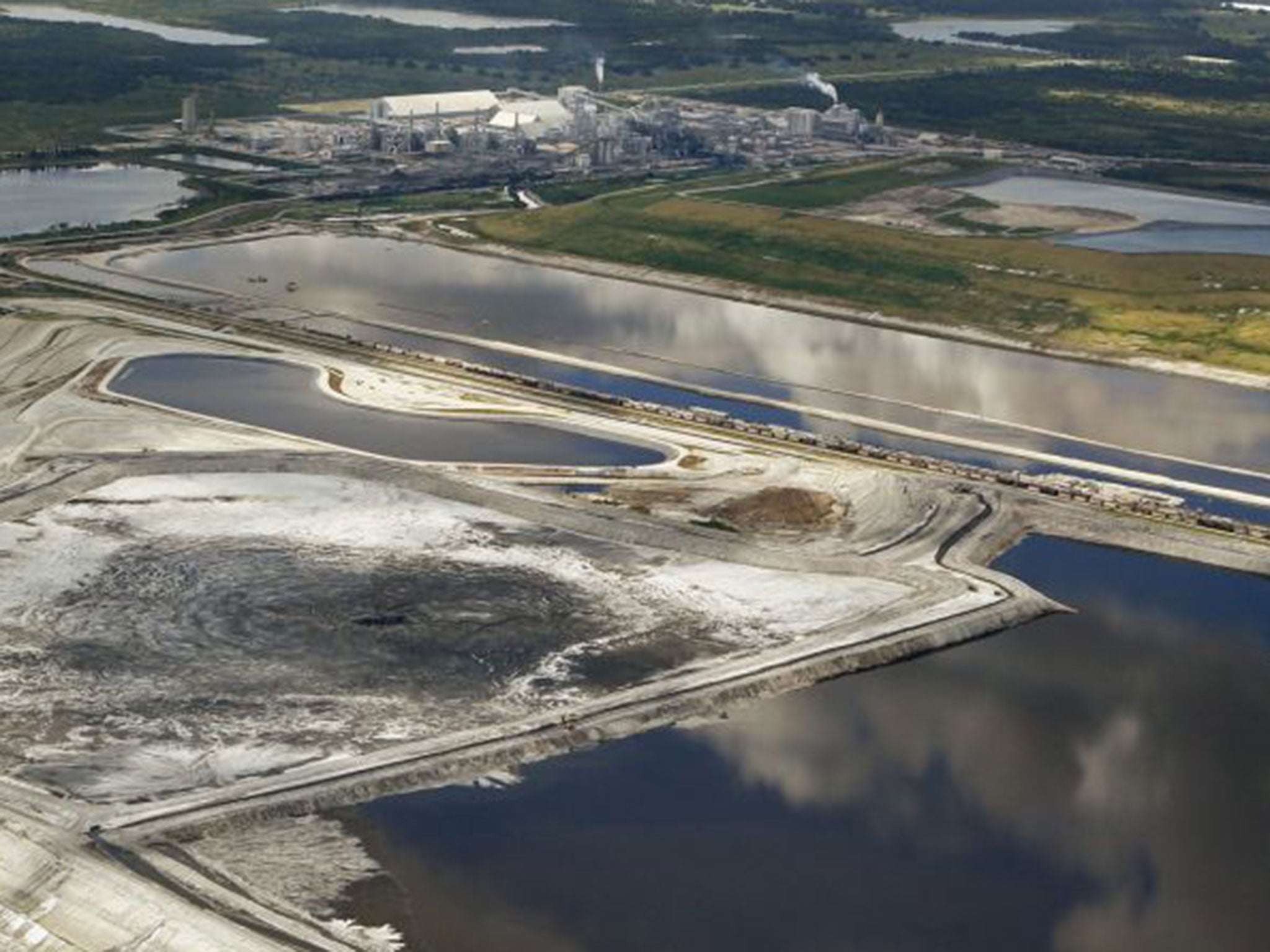Huge sinkhole causes water contaminated with radioactive waste to enter Florida drinking water source
The hole opened up beneath a fertiliser plant, draining 980 million litres of waste water

Your support helps us to tell the story
From reproductive rights to climate change to Big Tech, The Independent is on the ground when the story is developing. Whether it's investigating the financials of Elon Musk's pro-Trump PAC or producing our latest documentary, 'The A Word', which shines a light on the American women fighting for reproductive rights, we know how important it is to parse out the facts from the messaging.
At such a critical moment in US history, we need reporters on the ground. Your donation allows us to keep sending journalists to speak to both sides of the story.
The Independent is trusted by Americans across the entire political spectrum. And unlike many other quality news outlets, we choose not to lock Americans out of our reporting and analysis with paywalls. We believe quality journalism should be available to everyone, paid for by those who can afford it.
Your support makes all the difference.At least 980 million litres of contaminated water including radioactive substances has been leaked into one of Florida’s largest sources of drinking water.
Officials said a huge sinkhole opened up beneath a fertiliser plant near Tampa, causing waste water to pass into an aquifer that supplies much of the state.
It contained phosphogypsum, a by-product from the production of fertiliser that contains naturally occurring uranium and radium.
Mosaic, who operates the plant, said the leak posed no risk to the public and was being recovered with pumps before it could contaminate private supplies.

But Jacki Lopez, Florida director of the Center for Biological Diversity, was not reassured.
“It's hard to trust them when they say 'Don't worry,' when they've been keeping it secret for three weeks,” she told Reuters.
Environmental groups said the damage from the sinkhole could be severe, adding to decades of pollution from the phosphorous fertiliser industry.
Mosaic, the world's largest supplier of phosphate, said a hole 45 feet (13 metres) in diameter opened up beneath a pile of waste material called a “gypsum stack”.
“Groundwater moves very slowly,” said David Jellerson, senior director for environmental and phosphate projects. “There's absolutely nobody at risk.”
The sinkhole, discovered by a worker on 27 August, is believed to reach down to the Floridan aquifer, and underground system of porous rock that is a major source of drinking water in the state.
It underlies all of Florida and extends into southern Alabama, Georgia, and South Carolina, supplying groundwater to the cities of Tallahassee, Jacksonville, Gainesville, Orlando, Daytona Beach, Tampa, and St Petersburg.
The aquifer also supplies water to thousands of domestic, industrial and irrigation wells throughout the state.
Mosaic began diverting the pond water into an alternate holding area to reduce the amount of drainage when the problem was first detected and has been “recovering the water by pumping through onsite production wells”.
Mr Jellerson said: “We have an extensive monitoring system. It's already indicating that it's recovering the material, but it will take some time for that process to complete.”
Dee Ann Miller, spokeswoman for the Florida department of environmental protection, said the company is updating state and federal agencies on the situation.
“Along with reviewing daily reports, DEP is performing frequent site visits to make sure timely and appropriate response continues in order to safeguard public health and the environment,” she added.
“While monitoring to date indicates that the process water is being successfully contained, groundwater monitoring will continue to ensure there are no offsite or long-term effects.”
Meanwhile, the Polk County phosphate plant where the leak originated is still running.
The incident comes less than a year after Mosaic settled a massive environmental lawsuit with the US environmental protection agency in which the company agreed to nearly $2 billion (£1.5 billion) in improvements and clean-ups at its plants.
Additional reporting by AP
Join our commenting forum
Join thought-provoking conversations, follow other Independent readers and see their replies
Comments